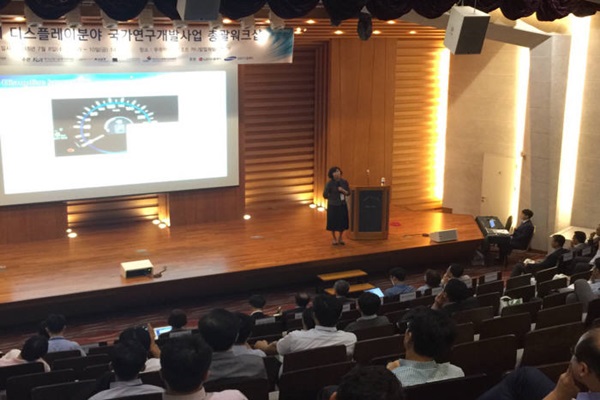Samsung Display is planning to develop world’s first 11K super-resolution display by working together with industry and education. Government is investing 26.5 million dollars by stages for 5 years hereafter.
At 10th Display Field National Research Development Business General Workshop that was held at Muju Deogyusan Resort, Executive Director Chu Hye Yong of Samsung Display’s Base Technology Department said that it is challenging itself to develop super-resolution display with 2250 ppi, which is number of pixels per inch that is 3 times higher than previous resolution, and started development process with 13 domestic and foreign companies starting from the 1st of June.

This business is part of GiGA Korea’s business that is being led by Ministry of Science, ICT, and Future Planning (MSIP), and name of the project is EnDK. It is predicted that prototype can be shown to the public at 2018 Pyeongchang Winter Olympics at the earliest.
As a main company that is overseeing the project, Samsung Display is aiming for a goal that allows 2250 ppi-level 11K display for mobiles to implement 3D-effect. If display panel’s resolution increases extremely, there is an optical illusion where it is same as watching 3D screen. Because 11K is able to show screen colors in detail, it is able to show 3D-effect.
Currently 500 ppi-level 2K (2560x1440) display product is being released as one with the best specification in mobile display field. A prototype with 8K resolution came out in large-sized display for TVs field, and most of UHD 4K products are considered as the ones with best resolution.
“We are hoping that we are able to show such technologies at Pyeongchang Olympics if there is a progress in developing technologies. Although some might think that 11K as ‘over specification’ that consumers do not need, this can work as a basis for Korean display industry take another leap if related materials and parts improve through this.” Executive Director Chu stressed the importance of this technology for the future.
Staff Reporter Sung, Hyeonhee | sunghh@etnews.com